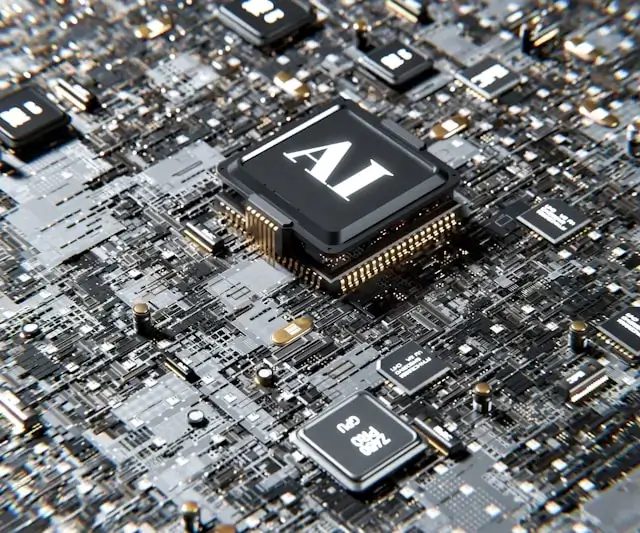
Customer Experience
Conversational vs. Generative AI: What’s the difference?
Generative AI is a key buzzword in the world of artificial intelligence. How is it different to conversational AI, and what does the implementation of this new tool mean for business? Read on to discover all you need to know about the future of AI technology in the CX space and how you can leverage it for your business.
Artificial intelligence (AI) is a digital technology that allows computer systems to mimic human intelligence. It is able to complete reasoning, decision-making and problem-solving tasks, using information it has learned from deep data troves. Powered by algorithms, AI is able to take on many of the everyday, common tasks humans are able to do naturally, potentially with greater accuracy and speed.
It’s a technology with increasing importance across many sectors. In particular, it’s transforming the customer experience space, providing new ways to personalize interactions, increase engagement and respond more quickly to customer queries. It can be seen in many forms: virtual assistants, marketing tools, content generation and more.
However, not all AI is made the same. Conversational AI and generational AI are two different but related technologies, and both are changing the CX game. Learn more about the differences and the convergences of conversational AI vs generative AI below.
Understanding AI: Your real-world CX playbook
Conversational AI: Natural Language Processing at its best
The aim of using conversational AI is to enable interactions between humans and machines, using natural language. Conversational AI is able to bring the capability of machines up to that of humans, allowing for natural language dialog between. Ideally, it should feel just like a human conversation.
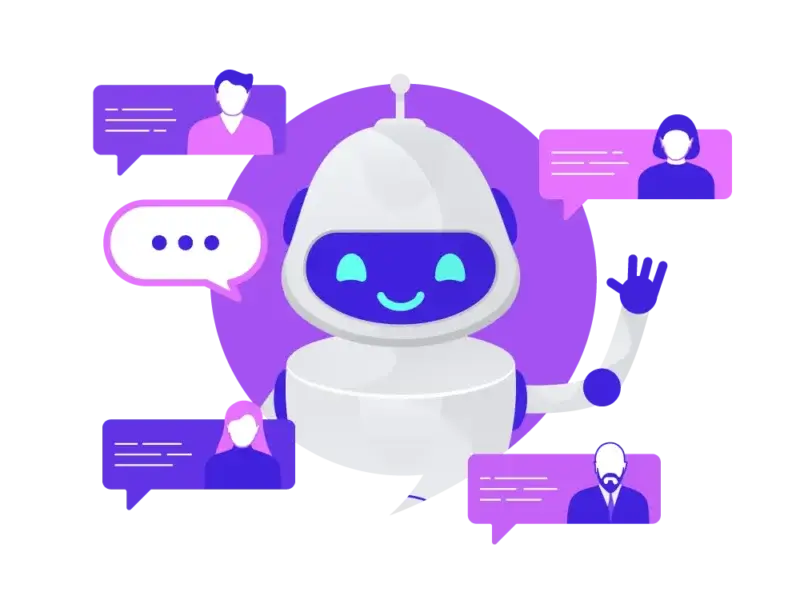
How does conversational AI work?
Conversational AI utilizes advanced algorithms and machine learning to respond to human inputs in a natural way. Rather than using pre-written scripts and following specific rules, the technology is able to deduce information from natural conversation prompts.
To do this, conversational AI uses Natural Language Processing (NLP) to identify components of language and “understand” the meaning of the word and syntax. It can recognize grammar, spot spelling errors and pinpoint sentiment as a result. Once the conversational AI tool has “understood” the text, deep learning and machine learning models are used to enable Natural Language Understanding (NLU). This identifies the request or topic, and triggers actions as a result, such as pulling account information, adding context or responding. It can also store information on user intents that were noted during the conversation, but not acted upon (dialog management).
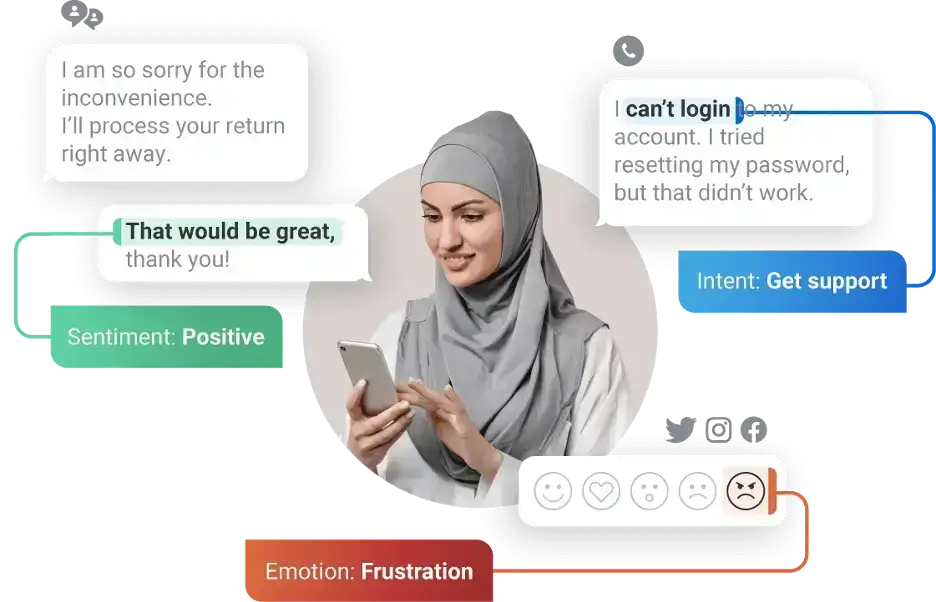
How can conversational AI be used in CX?
Conversational AI is of great use in CX because of its ability to make virtual assistants, chatbots and voice-based interfaces feel more “human”.
Instead of customers feeling as though they are speaking to a machine, conversational AI can allow for a natural flow of conversation, where specific prompts do not have to be used to get a response. Rather than storing predefined responses, the conversational AI models are able to offer human-like interactions that utilize deep understanding.
This can help with providing customers with fast responses to queries about products and services, helping them to make quicker decisions about purchases. It can alleviate the pressure on customer service teams as the conversational AI tool can respond quickly to requests. It’s a useful triage tool for giving quick-win customers what they need, and passing along more complex queries or complaints to a human counterpart.
What are the benefits of using conversational AI in CX?
There are several benefits to utilizing conversational AI in your CX strategy. These include:
- Improved customer engagement: Customers feel as though they’re able to get what they need, and with a personalized conversational AI interaction, they feel heard. This improves customer satisfaction and engagement, as the conversational AI can mimic human conversation and provide a good connection on an individual customer level.
- Faster response time: Conversational AI can pull information from various sources quickly, providing customers with little to no wait time. This saves on having to provide human interaction, which can be costly.
- 24/7 availability: Customer support centers can cause high costs when run with constant availability. With the support of conversational AI, 24/7 response times are more achievable and less costly.
- Reduced churn rate/drop off rates: When customers are able to quickly ask the questions they need and get information they require to make a purchase, they’re more likely to stay on your platforms such as your website and follow through on their original action.
What are the potential drawbacks of conversational AI?
Though conversational AI has become more advanced in a short period of time, there are still potential challenges and limitations to the technology. For example:
- The AI can’t handle more complex queries or complaints: More complex issues can sometimes be beyond the scope of conversational AI-based tools, even with NLP assistance. Sometimes, the tool won’t be able to understand the human language being used due to dialects or location-specific terminology.
- Customers sometimes prefer to speak to a human: Some queries or complaints are not complex, but they have a more emotional component that may require a human intervention. Offering a blend of conversational AI with human interactions can help to resolve this problem.
- The conversational AI can’t maintain context: Conversational AI is able to pick out context based on clues in the user queries, but it’s not faultless. Losing the context thread can mean the AI responds in a way that isn’t helpful or satisfying.
Generative AI: machine creation
Generative AI, on the other hand, is aimed at creating content that seems as though humans have made it, ranging from text and imagery to audio and video. It uses deep learning techniques in order to facilitate image generation, natural language generation and more.
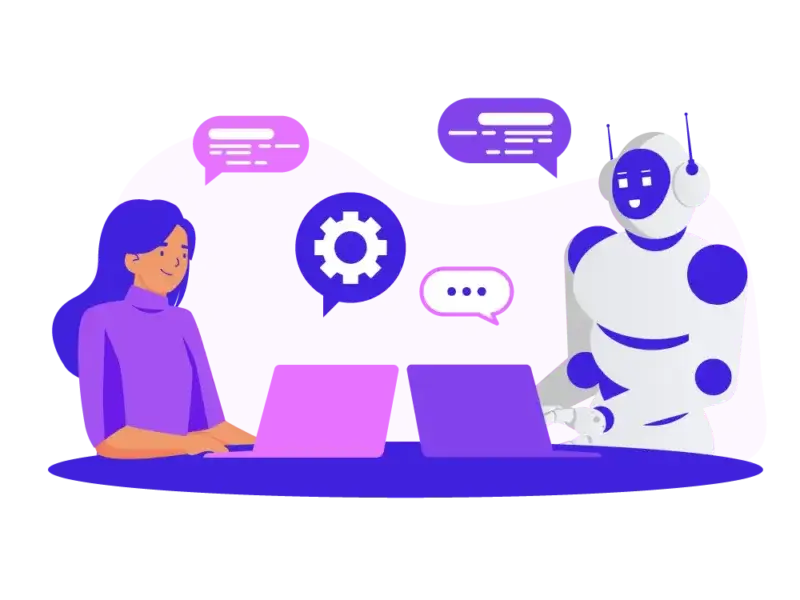
How does generative AI work?
There are various types of generative AI techniques, which all work in different ways to create new content.
These can include:
- Diffusion models: These types of generative AI models are able to learn by adding visal “noise” to the data it is being trained with, and then reversing this process. This allows the model to “learn” how to create similar content.
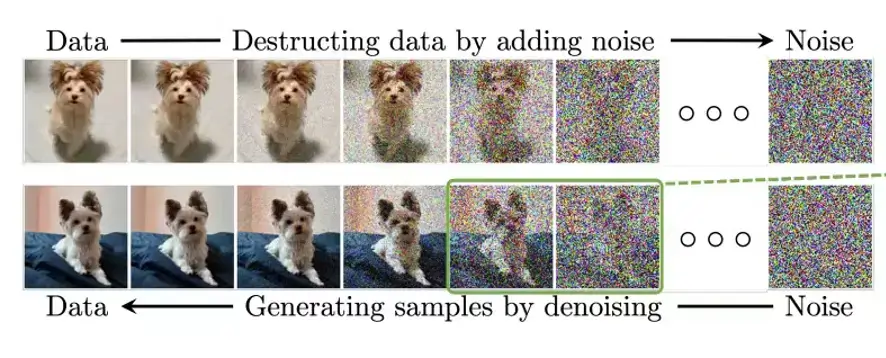
Image credit: Encord.com
- Generative adversarial networks (GANs): This approach uses deep learning methods to create new content. It creates a learning problem to be evaluated by two distinct sub-models: a generator (which creates new content) and a discriminator model (that tries to establish whether the content is real or generated). By using this comparative approach, the technology is able to create new content better able to “fool” the discriminator model.
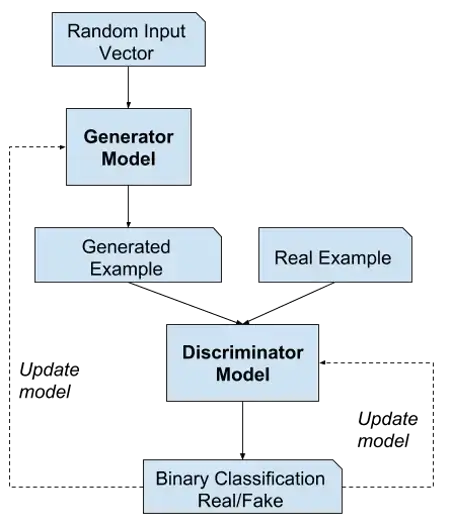
Image credit: Encord.com
- Transformer models: This type of model uses a neural network which can learn via context. It can glean meaning by figuring out the relationships between sequential information, such as words in a sentence.
A commonly-referenced generative AI-based type of tool is a text-based one, called Large Language Models (LLMs). These are deep learning models utilized for creating text documents such as essays, developing code, translating text and more.
Using human inputs and data stores, generative AI can also create audio clips, music and speech, as well as creating videos, 3D images and more. It can be used to create everything from logos to personalized imagery in a specific style.
How can generative AI be used in CX?
Generative AI can be very useful for creating content that is personalized without having to make it by hand. Generative AI tools can automatically create multiple types of content that are targeted to specific audiences, or if your internal team needs some inspiration, can just be used as a prompt for creative ideation. Creating highly tailored content in bulk and rapidly can often be a problem for marketing and sales teams, and generative AI’s potential to resolve this issue is one that has significant appeal.
What are the benefits of using generative AI in CX?
Below are some of the main benefits to using generative AI in CX:
- Enhanced personalization: Unlike creating personalized content from scratch by human means, generative AI can create multiple types of content to specification at scale.
- Increased efficiency: The time and effort required to deliver more tailored content is significantly lowered, once the appropriate prompts have been created. Over time, the generative AI tool is able to “learn” to produce items that are more in line with the original brief.
- Great scalability: From small projects to large, multi-audience efforts, generative AI use can easily scale without necessarily having to create more job roles.
What are the potential drawbacks of generative AI?
Though generative AI does have incredible potential, it does have some potential downsides when used in a business context. These can include:
- Ethical concerns: Generative AI is a fairly new technology to come into the CX space, and issues such as the potential to spread inaccurate information or present AI images as “real” are a concern.
- Bias issues: Generating AI is trained on human-generated content, which naturally has some bias, depending on the creator. The AI is not necessarily able to distinguish bias and will perpetuate issues from the data on which it uses as a learning source.
- Intellectual property rights: Issues around copyright, data protection and intellectual property misuse are all potential issues when generative AI is trained on content that might accidentally include non-licensed sources or private data.
- Cost: Utilizing public large language models (LLMs) can come at a large cost, which can cause a slower return on investment.
What are the key differences between conversational AI vs generative AI?
The general difference between the two types of AI technology is that conversational AI creates authentic-feeling, human-seeming interactions through text and speech, whereas generative AI creates original content from prompts given by humans.
However, both require training data to be able to “learn”, and both conversation AI and generative AI come are constantly being iterated upon as new tools are developed.
Where conversational AI and generative AI converge
Within CX, conversational AI and generative AI can work together synergistically to create natural, contextual responses that improve customer experiences.
Utilizing both conversational AI and generative AI is critical for rich experiences that feel like real conversations. Generative AI can create more relevant content, presented in a more human-like fashion, with a deeper understanding of customer intent found through conversational AI.
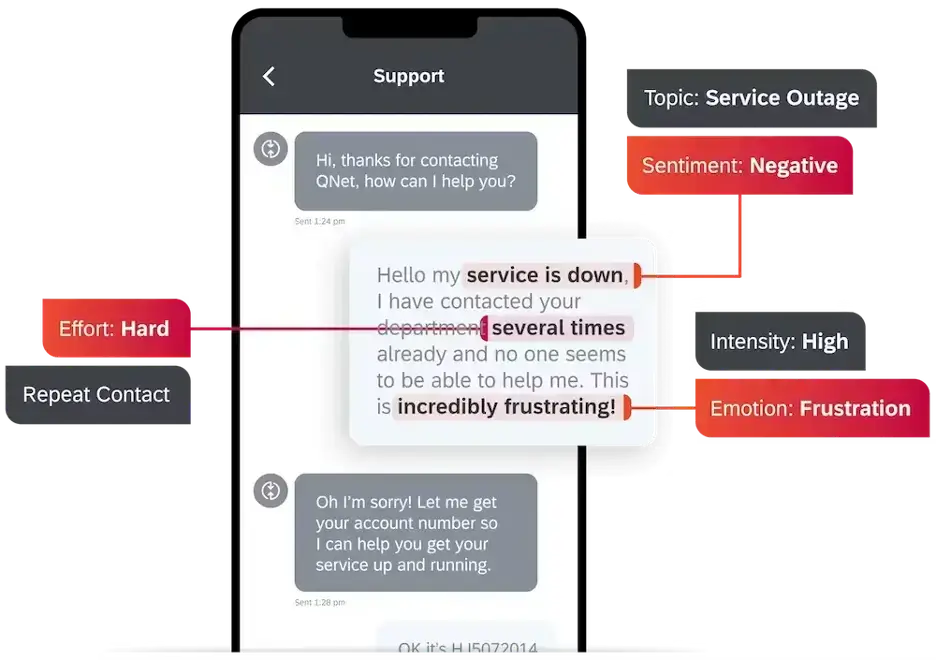
Though both can be used independently, combining the power of both types of AI can be greatly beneficial for a customer experience strategy. Conversational AI could be built on top of generative AI, with the conversational AI trained on a specific vertical, industry, segment and more to become a highly specific, responsive tool.
Examples include:
- Personalized recommendations for products or services, delivered in a natural way through conversation
- Highly responsive and intelligent virtual assistants that can offer content that’s relevant
- Automated content creation that feels human-like in nature
The Future of CX with AI
Artificial intelligence, particularly conversation AI and generative AI, are likely to have an enormous impact on the future of CX. However, finding the right AI for the right role will be an important part of how businesses forge ahead.
To ensure you’re ahead of the crowds - and prevent being left behind - choosing, implementing and scaling this AI technology is key for CX leaders and other CX professionals. At present, there isn’t a comprehensive AI tool that can complete all the necessary tasks for CX to thrive. This means that you’ll need to continually explore the potential of this technology to supplement and augment your teams, staying up-to-date with the latest developments and trends.
Read our latest discussion of generative AI in our eBook.
Understanding AI: Your real-world CX playbook